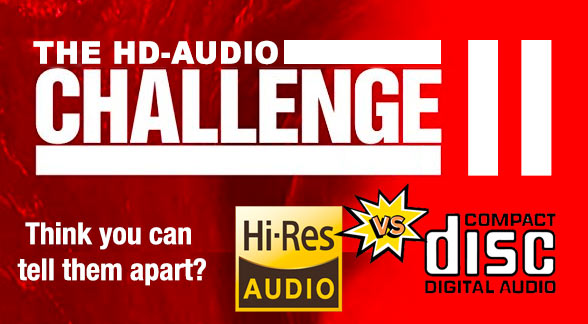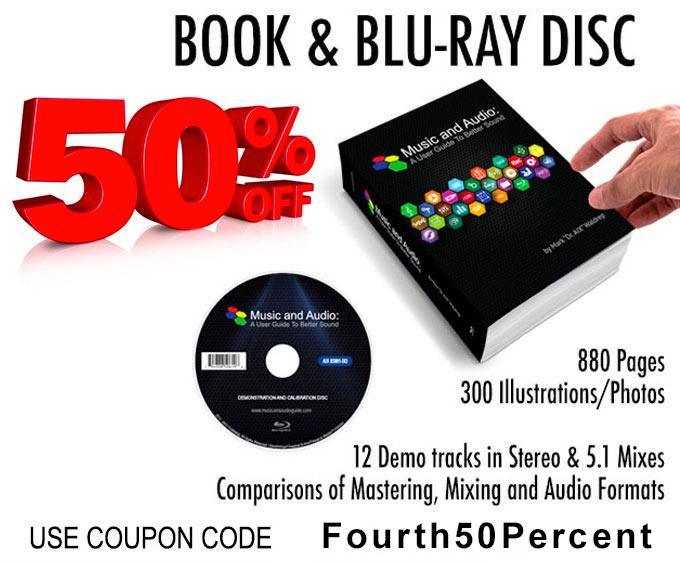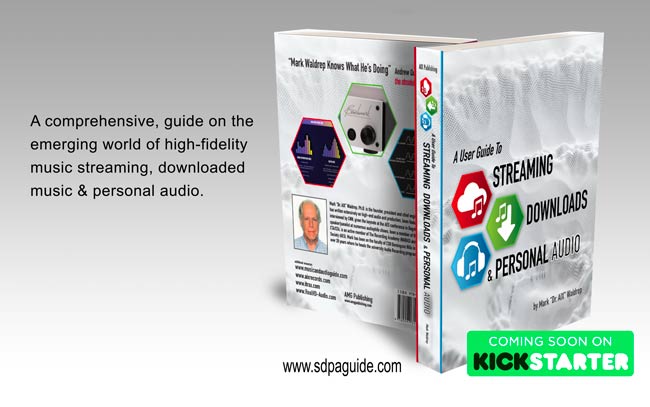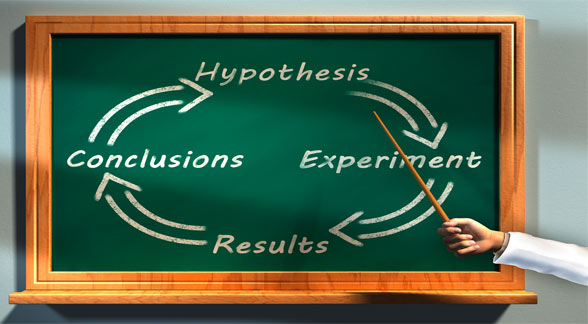HD-Audio Survey Update
I know many of you have been waiting patiently for me to provide detailed, track by track results of the HD-Audio Challenge II. I’ve written in general terms about my findings but have not revealed a rigorous breakdown as promised. The reason is because I have submitted the abstract and description of my research project to the fall AES (Audio Engineering Society) Conference and will be submitting a paper to the the society’s Journal. One of the questions associated with the submission process asks whether I have already published the results of my survey. And while I have revealed the general process and some of my conclusions, the details of the survey have not yet been published. So I’m holding back. I apologize for the delay.
Here’s the abstract that I submitted:
Native High-Resolution versus Red Book Standard Audio: A Perceptual Discrimination Survey
Mark Waldrep – (mwaldrep@csudh.edu) California State University, Dominguez Hills, CA, U.S.A.
The perceptibility of high-resolution versus CD standard audio has been the subject of research and debate since the introduction of hi-res audio distribution formats almost twenty years ago. The author conducted a large scale survey to determine whether experienced listeners could differentiate between a diverse set of twenty native high-resolution PCM stereo recordings and downconversions of the same masters at CD spec, 44.1 kHz/16-bits fidelity – Red Book Audio. Participants were encouraged to audition the files using their own systems, which ranged from modest, headphone-based personal setups to audiophile quality rooms costing in excess of $50,000 to professional studio environments. They were not allowed to use analytical tools or other non-listening means to assist in their observations. Over 450 responses were received from professional audio engineers, experienced audiophiles, casual music enthusiasts, and novices aged eleven to eighty years. The online survey submissions show that high-resolution audio was undetectable by a substantial majority of the respondents regardless of experience level, equipment cost, or process with almost 25% choosing “No Choice.” However, some evidence suggests specific genres and recordings produced marginally higher positives.
We’ll see if the society accepts my submission. I’ll keep you posted. I did get some feedback from an AES member complaining that my study doesn’t meet rigorous standards. This individual stated:
“From what I see in a quick look at Mark Waldrep’s website about this survey, little in it appears to qualify as valid test methodology. Random hardware, random acoustics, random listeners, listening test protocol apparently left up to the listener (duration, repeats, internal references, loudness). There are reasons why these variables are controlled in formal testing before statistical analysis can have any validity. A full discussion of methodology for high res audio testing is too long for fb but there are publications at AES showing high res audibility when done with appropriately careful design.”
The listing of “Random hardware, random acoustics, random listeners, listening test protocol apparently left up to the listener (duration, repeats, internal references, loudness) sounds like the real world to me. What good is “formal testing” if it doesn’t reflect the real world?
I responded:
“I have never stated that my survey qualifies as a ‘rigorous’ study. The industry makes the claim to real world listeners/audiophiles that “hi-res audio” makes a “dramatic improvement” in fidelity. Virtually all of the recordings available on disc, as downloads, ,and streams labeled “hi-res audio” are in fact standard-resolution masters digitized at hi-res specs without any fidelity improvement. My survey used real high-resolution recordings. Almost 500 respondents in real world (their own systems) circumstances failed to beat chance in selecting the high-resolution version over a CD downconversion. And just over 25% stated they couldn’t hear any difference. While it may not be as scientifically rigorous as having seven twenty-year olds listening to loud noise bursts in an anechoic chamber and claim to hear differences between 192 kHz and 44.1 kHz, I think my survey contributes in a meaningful way to the discussion. I hope you agree.“
I expect some criticism but am optimistic that there is value in the survey. Recall that the Meyer and Moran AES paper used random home systems, members of the Boston Audio Society, and non rigorous methods. We’ll see.
Still Time To Sign Up
The good news is that there’s still time to participate if you’re interested in testing your own listening ability and system. Simply sign up for the HD-Audio Challenge II by visiting the blog page from last October 28th (Click Here) or on the image below.

Receive Your Individual Results:
For those that have already participated and want to see how you did, simply send me an email or fill out the form below.
Fourth of July Specials Continues until End of the Month!
The 4th of July discount continues for another 9 days! Get a 50% discount on physical copies of the Music and Audio book. Now is the perfect time to read what has been called, “the gold standard” in audio reference books. Use coupon code “Fourth50Percent” at check out.

Streaming, Download, and Personal Audio – The New Book Is Coming
I spend a couple of hours everyday working on the new book — A Users Guide to Streaming, Downloads, and Personal Audio. Please visit the COMING SOON page and sign up for special discounts and early notification of the Kickstarter campaign. I expect to launch the campaign in the next month or so and have printed copies within 6-12 months.



Why is there no such audio format as 64 bits 48 kHz mono or stereo considering the sample rate is anyway to be oversampled or upsampled by the DAC itself ?
Because adding bits beyond those that can perfectly capture real world dynamic range and then some is a waste of data. All we need it 24-bits to capture 140ish dB of dynamic range…much more than even the loudest metal band.
Quite possibly, 64-bit FP will provide the current minimum of quantization noise.
Quantization noise associated with 24-bits is already below the noise floor of the recordings.
64-bit FP has enough headroom for any kind of editing without negative consequences and also no downconversion should be devised. The proposed format is as straight as AVI Uncompressed in video and will be the ultimate in audio realm.
24-bits also has more than enough headroom – more than the loudest acoustic sounds. And there is no need to downconvert to any other bit size. There is not increase in fidelity by moving to 64-bit or 352.8 sample rate. Real world audio fidelity is completely captured at 96/24.
I’ve posted the abstract on the Audiogon discussion forum. https://forum.audiogon.com/discussions/native-high-resolution-versus-red-book-standard-audio-a-perceptual-dis
did aforementioned member refer to some specific publication such as Joshua Reiss meta-analysis or something else?
I’m aware of the Reiss meta-analysis. However, it was not mentioned in the rebuke I received from the AES member.
One more thing Mark…
To use an analogy from the pharmaceutical / medical world, what you’re doing is like “Phase IV” research.
You’re engaging in “post-marketing” research here since Hi-Res has been sold as a remedy of sorts for years. Looking for effectiveness among “patients” as it were with your verifiably “pure” drug from a bona fide hi-res studio – as opposed to the questionable products from certain dirty labs ;-).
Thanks…I like this notion a lot. It’s exactly right. They can do research on twenty-year olds in sound proof chamber, play loud noise bursts at 44.1 and 192 kHz, and claim that Hi-Res Audio is audible. But in the real world — for those of us over 50 with compromised hearing and no anechoic chamber — listening to music is different. There is no audible difference between a CD and a high-res file in spite of the fact that you did very well on the HD-Audio Challenge II. Thanks!